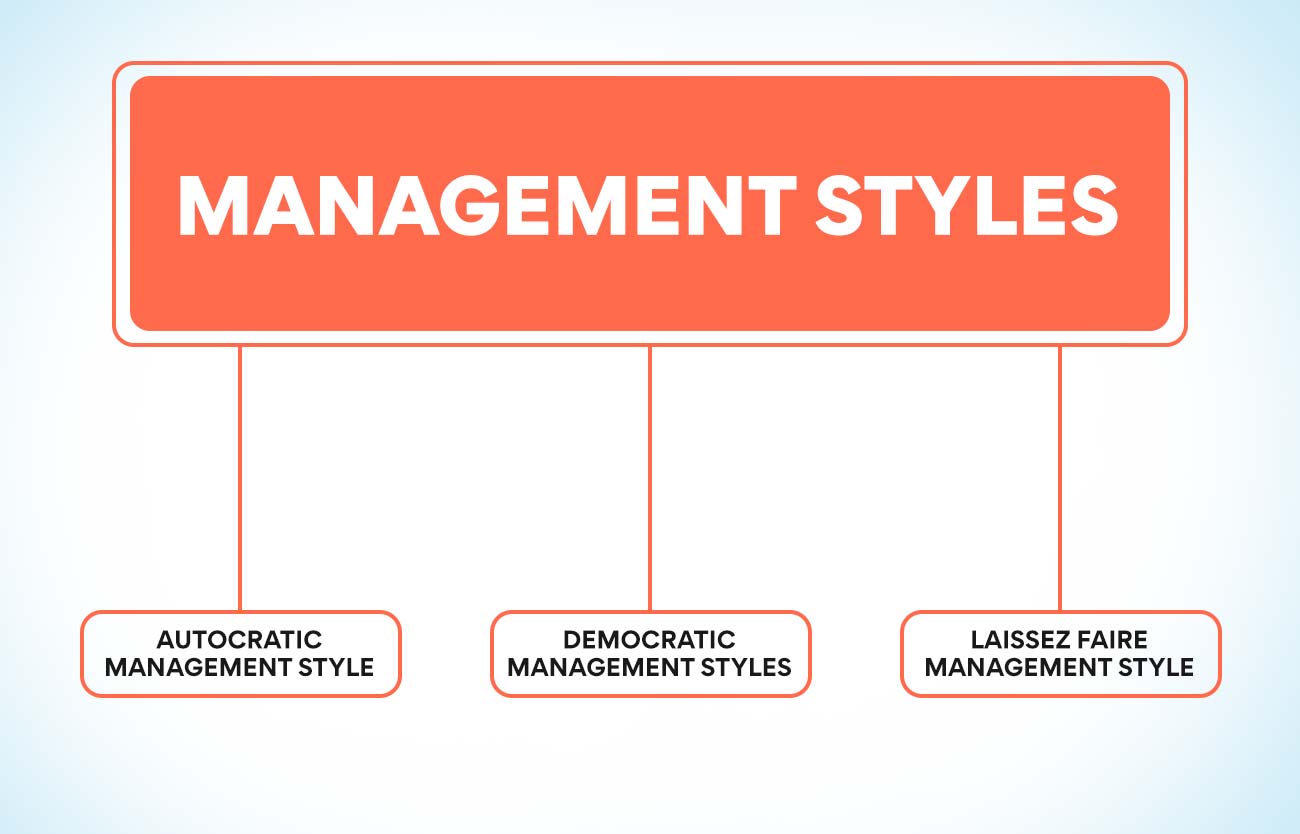Management is a term that we hear very often in the context of businesses of all sizes. The term has wide connotations, and different people understand it differently. When a business fails, we say it was “mismanaged”. However, management is very important not just for companies but also for one’s personal life. You must manage things correctly to achieve both your personal and professional goals. Companies can only reach their objectives if they are managed well. Let us see what it is and how the process works.
One can learn everything about this topic in the Post Graduate Executive Certificate Course In General Management offered by reputed institutions. You can learn more about this course and how it benefits future managers by visiting our website.
What Is Management?
Management is utilising a company’s resources to achieve its business goals. It involves organising and directing the people, operations and processes to reach the firm’s objectives. Managers are appointed to create an atmosphere for people to work efficiently and effectively to achieve their maximum potential. Managers have multiple roles depending on what business unit they head or in their position. One cannot define the job in a sentence. Below are a few responsibilities that managers execute as part of their job.
- Create various goals and objectives
- Prepare the schedule for different tasks
- Develop strategies to improve productivity, efficiency and performance
- Ensure compliance with company and statutory regulations and policies
- Develop and coach employees7yhg
- Track performance, budgets and productivity
- Resolve customer issues
- Train employees
The above is a partial list as the duties of a manager will differ with company and department. In short, a manager must be in a position to handle any job or situation and ensure that the company achieves its objectives.
Levels Of Management
Managers are present at various levels in every organisation. Their designations may vary from one company to another. But most of these positions fall under three management levels.
Top Management
These include the chief executives, president and vice presidents. The chief executives are appointed to head various departments like finance, operations and technology. There can be more than one vice-presidents in many companies. The role of these top managers is to integrate various components of the company and coordinate the activities of different departments. They analyse the business environment and formulate goals to ensure the progress of the firm and the welfare of the employees and stakeholders.
Middle Management
The division and department heads make up the middle management level. They receive guidance from the executives and convey the same to the staff members of their department. These professionals are also responsible for achieving the goals of their department. They must also look at the staffing requirements and convey the same to the HR department to ensure the filling of all vacancies.
Operational Managers
These are the people who directly interact with employees and ensure that work occurs as scheduled and objectives are met. The top management decides the authority and responsibilities of the operational managers. They are an important force in the company as they deal daily with the workforce and ensure that they complete all the tasks as required by the top leadership.
Management Styles
The working conditions and the people vary from company to company. This demands that the management style must also change to suit each organisation. How a person plans, organises, makes decisions, delegates work and manages people makes up that manager’s style. It can depend on various external factors like the company, industry, country, and culture of the firm. It will also depend on the person. Good managers are those who can change their management style to suit the other factors and ensure that they achieve their goals.
The different management styles can be grouped under three categories: autocratic, democratic and laissez-faire.

This management style has a top-down approach with one-way communication from the managers to the employees below them. It is the most controlling type of managing people, where the managers make all the decisions and hold complete power over everything. Managers monitor the employees closely and allow them to work within clearly defined parameters. These managers don’t encourage subordinates to voice their opinions or suggestions to improve work. We can categorise this category of management into three.
- Authoritative Management Style
Managers who follow this management style tell their subordinates what they expect them to do and punish workers if they don’t comply. They expect the staff members to obey the instructions and not question their effectiveness. These managers closely monitor the working of the employees without trusting them to do things on their own. They believe constant supervision is necessary for the workers to achieve their goals.
Pros
- Allows quick decision making
- Creates clearly defined roles and responsibilities
- Clear and solid expectations allow workers to work without uncertainty
- Increased productivity only with the presence of the manager
Cons
- Employee dissatisfaction develops, leading to higher manpower turnover
- Lack of professional development and employee engagement
- Creates resentment in the minds of the employees
- Doesn’t promote innovation and decreases efficiency
This style can be used when decisions need to be made and executed quickly, like in times of crisis.
- Persuasive Management Style
In this type of management, the leaders can convince the employees that managers should make decisions and these will be good for the employees, their departments and the company. Instead of ordering the employees to do what they say, the leaders explain the reasons for decisions and how it is good for the people. It makes the employees feel they are part of the decision-making process and reduces resentment.
Pros
- Management can earn the trust of the employees and make them accept top-down decisions more easily
- This is a better style as employees respond more positively to reasons and logic than to the threat of punishment.
Cons
- Employees will become less efficient under the restrictions they are placed under
- They will feel frustrated that they cannot give their opinions or feedback
- There is no provision for the workers to upskill
Managers with more experience and expertise can use this model, and it will help them explain why they are better at making decisions.
Also Read: What Is The Digital Economy?
- Paternalistic Management Style
It is a management style where the leaders act in the interest of the employees. They are more likely to address the staff members as family and demand their loyalty and trust. The managers will explain the reasons for decisions but don’t encourage any suggestions or opinions. The employees are told that the decisions are the best because the managers are experts in the subject.
Pros
- The welfare of the employees is considered, and decisions are made in their best interest.
- They encourage upskilling and employee training, leading to a happier and more productive workforce.
Cons
- Employees become dependent on the managers and lack innovation and problem-solving skills
- Employees who don’t believe in the concept of a company as a family will start resenting this type of management.
It can be used in cultures used to having hierarchical structures, and employees will accept a benevolent leader. This can be successfully practised in smaller companies.
You can learn more about this style of management by enrolling in the Post Graduate Executive Certificate Course In General Management. More details about this course are available on our website.
Democratic Management Styles
This type of leadership encourages the employees to voice their opinions during the decision-making process. But the final responsibility of the decision lies with the manager. There is communication in both directions, and team cohesiveness is maintained. In this style of management, there is scope for diverse ideas, skills and opinions that result in informed decisions.

- Consultative Management Style
In this model, the manager seeks the opinions of the employees before making the decision. All team members get the chance to voice their viewpoints. Though managers make the final decision, they will consider the opinions of all the team members before arriving at the decisions. This type of management is found in organisations working in specialised fields where the team members are subject experts, and the managers need their opinions to make the right decision.
Pros
- There is a good bond between the leaders and the team members, and it promotes trust within the team
- The ideas, opinions and experience of the team member help the leadership grow
- This model encourages innovation and opinions resulting in better problem-solving
Cons
- The process of consulting everyone is time-consuming and needs the manager to have excellent time management skills.
- If the manager doesn’t listen to the opinions of all the employees, there can be an allegation of favouritism, and workers can become resentful.
- Excessive consultation with staff can make them lose trust in their boss’s capability to make decisions.
This style is most useful when the team members are subject experts or when the manager is not as experienced as them in the subject.
- Participative Model
In this style of management, both the staff members and managers participate equally in the decision-making process. The employees are given more access to information about the company’s objectives. The leadership invites the workers to find innovative solutions. They work with the staff to make decisions and act on them.
Pros
- Employees work with more motivation and productivity as they feel that the management values their opinions
- Employee engagement is more as they feel more connected with the organisation’s goals
Cons
- more assertive Staff members can push others down, leading to conflicts
- Companies with trade secrets can be at risk if they allow staff members access to information
- Employees who are not interested in taking part in the decision process can start resenting this type of management.
Organisations that want to drive innovation can use this system. It is also good to use this style when implementing changes that the employees are not comfortable with. It will allow them to voice their opinion and help reduce resistance.
Also Read: Traditional vs Digital Marketing: Key Differences and Similarities
- Collaborative Management Style
The management creates an open forum where they discuss problems and seek solutions from everyone. The company makes decisions based on majority rule. As the employees are empowered to take ownership of the outcome, there is better engagement, innovation and creativity.
Pros
- Employees feel that the management trusts, values and hears them completely.
- This style inspires the staff members to do their best work, find solutions to problems and engage completely with the process.
- There are few conflicts, and issues are solved quickly due to open communication.
- Employee retention is high as everyone is engaged, and the firm hears their opinions to arrive at better solutions.
Cons
- This can be a time-consuming process
- Majority decisions may not always be good for the overall business interests.
- If the leader steps in to change decisions, the employees can become resentful.
This style is ideal when a firm wants to get innovative solutions. This management style is also good when some change needs to be brought about in the organisation.
- Transformational Management Style
This is an agile and growth-focused management style. Managers often push employees out of their comfort zone with encouragement to achieve greater performance levels. They constantly motivate the teams to raise the bar for achievements. The leaders work along with the team members and show themselves as examples.
Pros
- There is increased innovation, and employees are more ready for change, disruptions or challenging situations
- The model encourages creative thinking, and this helps in better problem-solving and product development
Cons
- There is a possibility of staff burnout if not used with care
- Some of the employees may not be able to keep up with the pace
This method is best for organisations that are in a fast-paced industry. It is also ideal when companies are changing.
- Coaching Management Model
The managers in this style of management see themselves as coaches and the staff members as valuable team members. Managers put the team’s professional development at the forefront and constantly strive to develop and guide their teams. The aim is to promote learning, and short-term failures are given less importance in front of long-term goals.
Pros
- Employees know that they will develop within their roles and hence feel more valued. They are also likely to be more engaged.
- There is better bonding between managers and employees, and team members do their best for their coach.
Cons
- There can be intense competition between employees for favoured roles and important tasks
- Short-term goals can take a hit when focusing only on long-term objectives
This style is great for organisations wanting to promote talent within them. It also helps in retaining employees and reducing turnover.
Related Learning: Difference Between Leader and Manager
Laissez Faire Management Style
The leadership takes a hands-off approach in this style of management. They delegate tasks to employees who work without supervision. The staff members control the problem-solving and decision-making. The managers give full freedom to the workers and step in only when their assistance is sought.
- Delegative Model
The managers are present only when allocating tasks, even if they are responsible for the completion of the work. The employees can do the work as they see best. Once the workers complete the job, the manager assesses the results and gives feedback on how to improve.
Pros
- This method fosters innovation and creativity in organisations having highly skilled workers
- The staff members become strong in problem-solving and teamwork and will support each other to solve their issues
- Those employees looking for autonomy in the workplace find this method to be highly satisfying
Cons
- Productivity suffers if there is no strong leadership
- Teams can suffer from a lack of direction, focus or uniformity
- If not managed properly, there can be conflicts among employees
- Some employees may feel that the management is not contributing anything to the success of the team
- Visionary Management Style
In this model, the managers inspire the staff members to improve performance. Leaders explain the goals and vision, convincing the team to work towards the organisation’s goals. The managers encourage the team members to complete their tasks with minimum interference. They will check from time to time but trust the employees to produce good results with the shared vision. The leaders provide a lot of constructive feedback and praise the employees on every success.
Pros
- Staff members are high on engagement as they believe in what they do and are driven to complete tasks successfully
- Employee turnover is low as they are highly motivated and satisfied with their jobs
- Innovation is very high, and quick problem-solving happens
Cons
- All managers are not inspiring enough to motivate the employees
- If the employees are not inspired, they will not perform well
This management style is good for companies looking to disrupt the market with innovative products or services. Any organisation looking to drive innovation can use this method to inspire the staff members.
You can learn about the different management styles and where they are most effective by enrolling on the Post Graduate Executive Certificate Course In General Management. The details of this course are available on our website.
Functions Of Management

- Planning
All of us agree that planning is necessary for all walks of our life. But it is all the more important for a manager because it ensures that tasks are completed on time. Planning in management refers to the activity of creating a timeline to complete tasks so that specific goals can be achieved. Good planning helps to reduce the wastage of resources. It also mitigates risks and enables companies to face unexpected situations without confusion. The way managers plan will be different depending on the company and the goals they aim to achieve.
- Organising
Organising is very important for managers to function efficiently and to ensure that all tasks are completed. Organising helps to create a symbiotic association between the people, physical resources and finance of the company. It provides the course of action for achieving success in one’s job. It involves the classification of all activities. Top managers must organise the funds in such a way that the important requirements are met immediately. Good management also involves the proper organisation of data so that it can be utilised for making better decisions.
- Staffing
No company can function without efficient employees. It is the responsibility of the management to make sure that there are suitable staff members in every position. Managers identify the skills required to complete the tasks and hire people with these capabilities. They must also see that the person can take up higher responsibilities in the future. It is also their responsibility to ensure that staff members get the necessary training to handle their jobs and get ready for future positions. Assessment of employees and rewarding them is also part of the managers’ duties.
- Guidance
This is an important job performed by the management in an organisation to ensure that everyone contributes to the success of the firm and also ensures their personal growth. Managers must provide the necessary guidance when staff members are faced with problems they cannot solve. They must be able to motivate the workers to perform better through their actions. These leaders must possess the necessary skills to direct and inspire their subordinates.
- Monitor
Monitoring is an important job for every manager. The person must make sure that tasks are completed as per the standards set by the company. Every organisation has its own set of quality standards that needs to be met in the product or service offered to customers. Managers make sure that the work of the employees meets the benchmarks set by the company according to its policies.
Conclusion
It is not just enough to have the required qualification to become a successful manager. One must develop a lot of essential skills that help to perform daily duties and achieve set objectives. A lot of skills required for a manager can be acquired even while on the job. But you must try and possess as many essential skills as possible before starting your management journey. It will help you perform better and move forward in your career quickly.
More Information:
What Are General Management Courses?
How To Achieve Optimum Professional Growth






_1672046778.jpg)




















